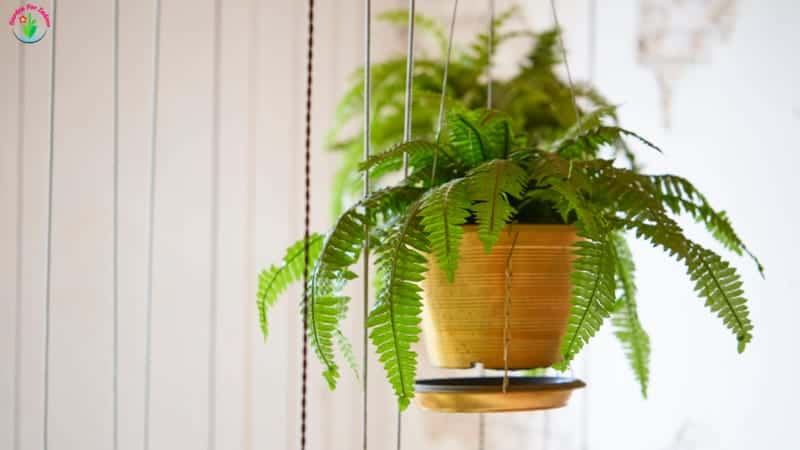Excess moisture is deadly for them, because it leads to a breakdown of normal air exchange in the soil. When there’s too much water, roots gradually die off, leaves turn yellow, wilt, and droop—never to perk back up. You’ll need to cut back on watering.
Contents
💦 How to Tell When Your Fern Needs Water
You can tell when watering is needed in a few ways. Drying soil looks lighter than wet soil. But if your ferns are potted in peat, that sign alone isn’t enough. Most of us check the soil by touch—it should feel just a bit damp, crumble easily, and not stick to your fingers. You can also tap the pot’s side: if the sound is dull, it’s too soon to water.
💦 Watering During Active Growth (Spring & Summer)
Especially heavy watering is recommended for ferns during active growth—in spring and summer. Even slight drying out can kill young shoots. Check soil moisture daily, and in hot weather, every morning and evening. The main watering is best done in the first half of the day.
Soak-and-Drain Watering Technique
With each watering, give your fern enough water to thoroughly soak the entire root ball until it drains into the saucer. If you see air bubbles on the soil surface, keep watering until they disappear. Avoid giving ferns a little water every day—that only wets the top layer and leaves the roots thirsty.
Pro tip: water from above so excess calcium, magnesium, and other mineral salts in the water get absorbed by the topsoil layer, which has fewer roots. High calcium levels in water can lock up soil nutrients (phosphorus, iron, manganese, aluminum, boron, etc.), turning them into compounds harmful to your plants.
Always dump out any water collected in the saucer after watering—stagnant moisture will rot roots. This is especially crucial in fall and winter.
If water doesn’t reach the saucer and just pools on the surface, check for a clogged drainage hole.
Sometimes, water rushes straight through to the saucer—that means the soil was bone-dry and water runs down the pot walls before it can soak in. In that case, give the fern a thorough watering and follow up with a mist.
💦 What Kind of Water Should You Use for Your Fern?
Water your ferns with room-temperature water. In winter, don’t use overly warm water—it can trigger premature growth. In summer, use slightly warmer water. The hotter your home, the warmer the water should be for both watering and misting. Cold water in a warm room can make your fern drop leaves.
💦 How and How Often Should You Water Your Fern?
At home, some hobbyist growers use boiled water or let tap water sit for 1–2 days. Both methods drive off chlorine and precipitate some calcium carbonate. A more effective way to soften water is to add a little oxalic acid to precipitate calcium.
Sometimes the root ball dries out so much the fronds wither. Don’t panic, and don’t toss your fern. Trim away all the dead fronds, move the pot to a bright spot, water thoroughly, and cover the soil surface with a glass jar or a polyethylene bag. This can revive Maidenhair Ferns (Adiantum raddianum) and other fern varieties.
💦 Misting Your Ferns
You can achieve the humidity ferns crave by misting them. Ferns also need fresh air, so ventilate the room occasionally—especially in hot weather when you mist frequently. Optimal air humidity for most ferns is 70–80%, but delicate-leafed ferns need 90–95%.
Dry air can scorch frond edges. If you can mist your plants daily, that’s a huge help. Fine-leafed ferns that adore high humidity need frequent watering and multiple daily mists.
Unfortunately, regular leaf misting only boosts humidity locally and briefly. To raise humidity more effectively, place pots on trays filled with damp sand, moss, peat, or expanded clay, or set containers of water between plants—or use a humidifier.
When misting, use softened water at just above room temperature. Avoid misting in bright sun or cold conditions. In winter, mist in the first half of the day. And remember: mist heavily after repotting for about a month, until new roots establish themselves.








